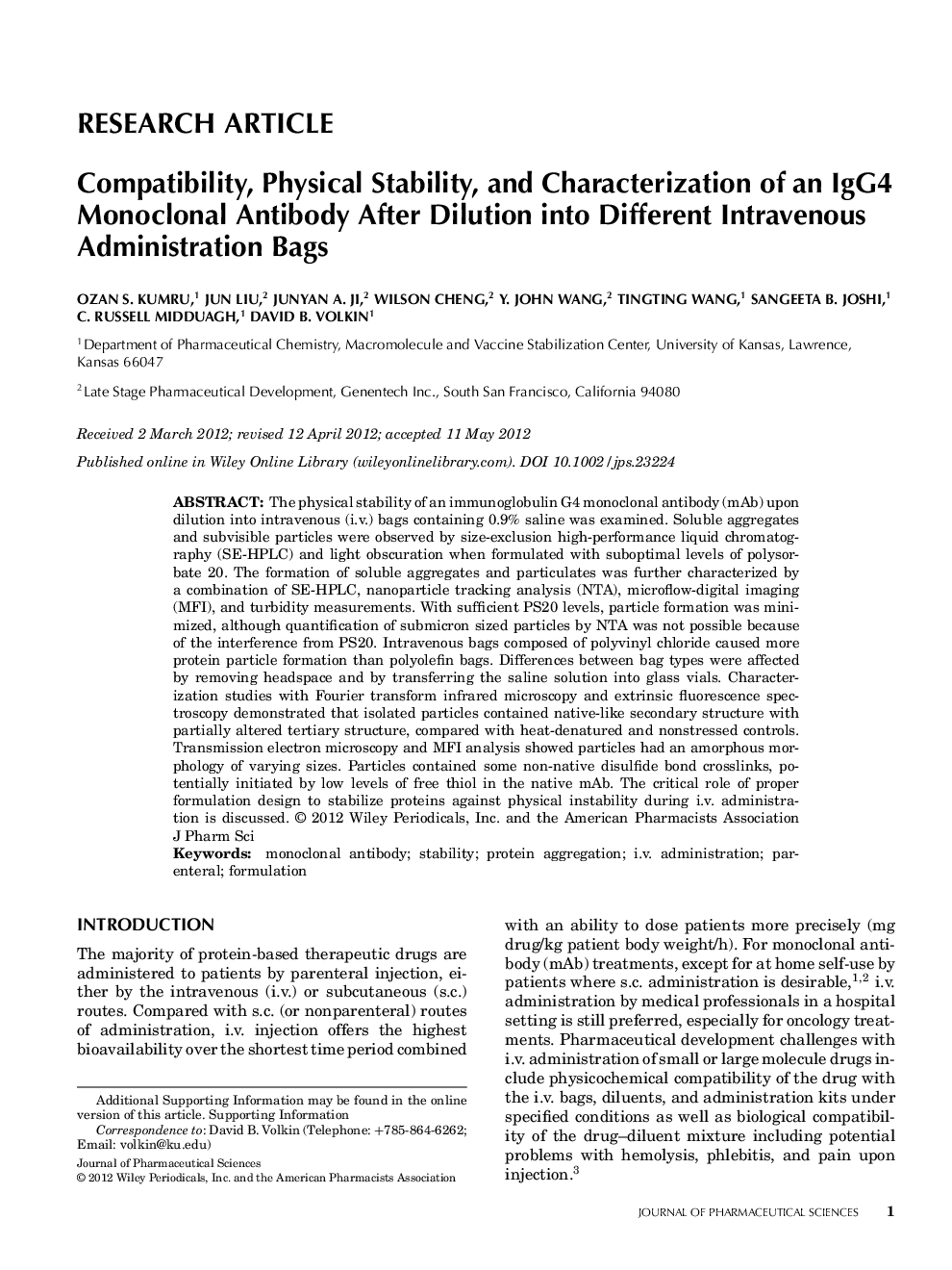| Article ID | Journal | Published Year | Pages | File Type |
|---|---|---|---|---|
| 2484873 | Journal of Pharmaceutical Sciences | 2012 | 15 Pages |
Abstract
The physical stability of an immunoglobulin G4 monoclonal antibody (mAb) upon dilution into intravenous (i.v.) bags containing 0.9% saline was examined. Soluble aggregates and subvisible particles were observed by sizeâexclusion highâperformance liquid chromatography (SEâHPLC) and light obscuration when formulated with suboptimal levels of polysorbate 20. The formation of soluble aggregates and particulates was further characterized by a combination of SEâHPLC, nanoparticle tracking analysis (NTA), microflowâdigital imaging (MFI), and turbidity measurements. With sufficient PS20 levels, particle formation was minimized, although quantification of submicron sized particles by NTA was not possible because of the interference from PS20. Intravenous bags composed of polyvinyl chloride caused more protein particle formation than polyolefin bags. Differences between bag types were affected by removing headspace and by transferring the saline solution into glass vials. Characterization studies with Fourier transform infrared microscopy and extrinsic fluorescence spectroscopy demonstrated that isolated particles contained nativeâlike secondary structure with partially altered tertiary structure, compared with heatâdenatured and nonstressed controls. Transmission electron microscopy and MFI analysis showed particles had an amorphous morphology of varying sizes. Particles contained some nonânative disulfide bond crosslinks, potentially initiated by low levels of free thiol in the native mAb. The critical role of proper formulation design to stabilize proteins against physical instability during i.v. administration is discussed.
Related Topics
Health Sciences
Pharmacology, Toxicology and Pharmaceutical Science
Drug Discovery
Authors
Ozan S. Kumru, Jun Liu, Junyan A. Ji, Wilson Cheng, Y. John Wang, Tingting Wang, Sangeeta B. Joshi, C. Russell Middaugh, David B. Volkin,
